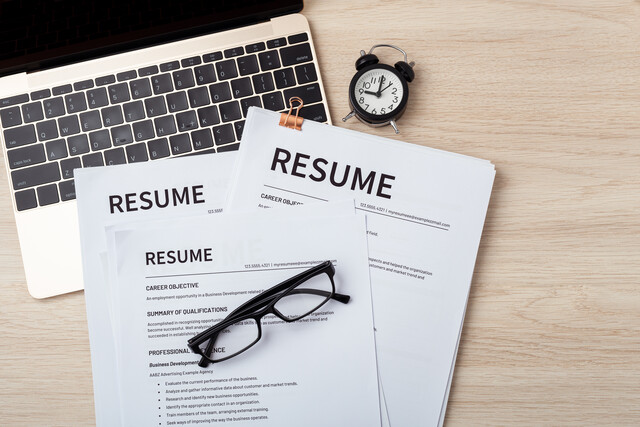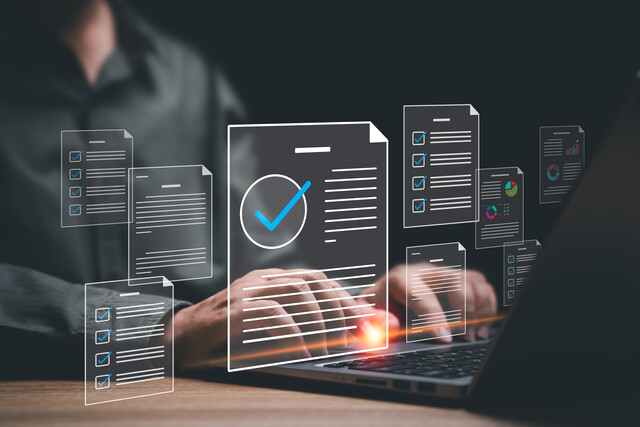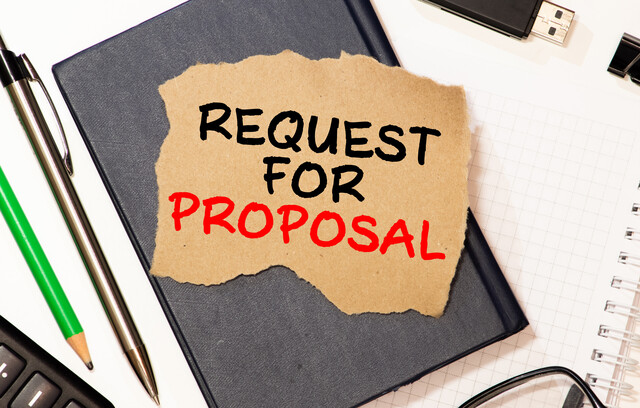Hand movements can actually hurt people more than they help them. By adding in another component to your reading, you're simply adding a crutch that can actually slow you down rather than help you go faster. Additionally, the way that you turn the pages of what you're reading can also cause you to read slowly as well as reduce your comprehension. There are also a variety of helpful techniques that you can utilize and use to improve your reading.
Pointing
Pointing is when you use your hand, finger, pencil or other object as a device to help you keep on your line. However, this is unnecessary and energy wasting. The entire page should be open and available to you when you're reading so that you can improve your visual bite rather than restrict yourself to the one line you're on. If you're having a hard time breaking this habit, then you may literally need to sit on your hands while you read until you can read without using your hands.
This is a habit that is often recommended by rapid reading experts; however, it is a habit that is best to avoid. Any time you cover the page, whether with your hand or a card then you're limiting your ability to completely understand the printed material. Any movement of the hand or finger movement simply distracts you.
Slow Page Turning
This aspect may sound trivial, but there have been several observations that slow page turning makes for ineffective readers. The average reader takes four seconds to turn the page and resume their reading. This is the same amount of time that it takes many speed readers to read an entire page. Slow page turning can easily result in the reader not only reading slowly, but also have an effect on your comprehension rate. If it takes you four seconds to turn the page then that results in several minutes of wasted time while reading any type of reading material.
In an ideal world, books would be printed on a continuous sheet, but that would make it difficult for libraries and bookstores to store their books. The writer's thought doesn't end at the end of each page, making it difficult to maintain a good understanding of what you're reading; especially if it takes you four seconds for you to turn the page.
One way to speed up your page turning is to "break" the book's back. This allows the pages to flip quickly. Holding the book with both hands, bend it back forcibly and repeatedly so that the covers meet each other in the back.
"Breaking" should be done every ten to fifteen pages. The process relaxes the binding and allows the pages to lie flat. This keeps you from having to hold the pages down with your hand, which makes it more time consuming to turn them. Of course, you only want to break the backs of books that you own. This process is generally only required for paperbacks, as hardbacks will lie flat on their own.
Skimming
When you skim your reading material, you are deliberately trying to read with a solid overview of the selected details. When you skim, you need to do it with a purpose:
- You're seeking to pull out main ideas from a large amount of reading material.
- You're testing whether you can safely skip a passage in the reading material.
- To locate material that you need to read through thoroughly.
- To obtain a bird's eye view without mastering the details.
There are several types of material that are good for skimming, including:
- Web sites
- Magazines
- Newspapers
- Nonfiction books
- Manuals
- E-zines
Scanning
Scanning is actually the opposite of skimming. You actually scan reading materials all the time; you probably just don't know the name of what you're doing. There are several types of reading materials that you will scan, including:
- Research on the Internet
- TV listings
- Specific topics in an index or Table of Contents.
- Scores in the sports section.
- Phone numbers or names in the phone book.
Skimming and scanning can also work hand in hand. You might skim the headlines of the newspaper, but you might scan the article looking for specific details that jump out at you.
Scanning can be done very quickly, as fast as 1,500 words per minute. Because you are typically looking for a specific detail or fact in what you're scanning, you're likely to have good comprehension of what you're looking for as well.
Skipping
Skipping while reading means that you don't read an entire section altogether. When you skip at any point in your reading, then it is probably material that is unnecessary or just filler. A skilled reader accurately knows when it is safe to skip a section. Skipping is selective reading in a way. You can skip reading a section altogether if:
- There's nothing new in the material.
- It covers nothing you need to know.
If you read several different reading materials over time, then you probably have a lot to skip when reading. For instance, if you read newspapers, web sites, or magazines on a particular topic with a lot of the same main facts or points in it, then you probably can skip reading several sections of the material all together. Previewing and skimming also helps you to identify areas you can safely skip as well.
There's no point in learning to speed read if you can't implement it into everyday life. Wouldn't it be great if you could finish your morning newspaper? Or, wouldn't it be great if you could actually read a novel from start to finish within a reasonable amount of time and remember what the story was actually about?
Your mindset in daily reading can have a large effect on how quickly and effectively you're able to read. However, if you effectively implement your new skills in speed reading, you will be able to make your daily reading something you look forward to rather than dread.
Speed Reading Business Communication
When it comes to business communication, you most likely have a variety of lengths and formats to deal with. You probably see everything from memos and letters to reports and policies. Some of this may be interesting, while others are awful and drab. Either way, speed reading is not always about reading these documents as quickly as possible, but reading certain parts quickly while reading other parts slowly will help you make the most and get the most out of your reading. There are also certain areas to focus on, including:
- The subject
- The relevance the material has on your job
- Who sent it to you
- How much time you have to read it.
- Your knowledge of the topic
- Whether you need to respond to it or not
Always preview the material ahead of time and be sure to skim it for keywords, phrases and key phrases.
Speed Reading Email
Email is a regular part of business and life today. You likely receive hundreds of emails each day from a variety of people including employees, customers and clients. Here are four tips to help you manage your inbox.
1. Look at who it is and who sent it.
2. Look at the subject line.
3. Preview the communication before reading it entirely.
4. Use speed reading techniques, such as looking for keywords, phrases on the screen.
Finally, use effective subjects in sending your emails so that when you receive a response, you will automatically know that the response is one you will want to read in its entirety. Email subject lines can also tell you whether or not you need to read the email right away or if you can wait to read it until later.
How to Speed Read a Web Site
Whether you are researching for school or just Googling something for your knowledge, then you need to learn how to speed read online. The web is a great resource for finding information on a variety of different subjects, but it can often take hours of reading to find what you're looking for if you don't know how to do it efficiently.
When searching the web, you need to forage for information in an effective manner. Web foragers are information searchers who ruthlessly seek what they are looking for and actually use excellent speed reading skills while they do this. They skim and scan what they are looking for and when they find it, they read what is available and then continue the hunt. When you're searching the web, there's so much information to absorb that there's no way you could read it all, so you have to be efficient.
Proper searching online can also help you. Always use a search engine and use precise keywords. There's no reason to use the small words, such as "and" or "in." In fact, on the web, these words are referred to as "stop words." This is because the search engines don't index these words, they only index those words that are longer and have a meaning. This shows that keywords not only apply in speed reading, but in web searching as well. Using these words in your searching and reading allows you to be effective in two areas in your life. Additionally, always use the main search engines such as:
- Google.com
- AskJeeves.com
- DogPile.com
- WebCrawler.com
- AltaVista.com
- Yahoo.com
- MSN.com
- Lycos.com
- InfoSeek.com
Many people do not know it, but AltaVista is actually the oldest search engine on the web and can often be more effective than the popular Google. If you can't find what you're looking for on one search engine within the first three pages, move to a different one.
Once you find a page that might have what you're looking for, use your scanning and skimming techniques to read the site effectively. Many people have a bad habit of printing information off of the web. This is a bad habit to get into as it not only wastes paper and ink, but it wastes time in reading as well as adds to your pile of reading you may already have.
Managing Your Mail
Some people have a massive amount of mail that they receive on a daily basis. They receive newspapers, magazines, letters, bills and more. If you devise a system and stick with it, you'll be able to handle your mail more effectively.
For most people, going through their bills is a boring and dreadful task. However, there are several ways that you can organize and manage your mail more effectively, particularly your bills.
- Prepare the bills as soon as you open them. Open your bills, review them quickly and throw away any excess pages or advertisements. Then place the bill in the envelope that it should be mailed in or paper clip the two together. Place in a mail holder marked "Bills Due" or "Bills Payable" and keep it in a place where you won't forget them.
- Mark the envelope with the due date of the bill. With every bill, write the date to pay it on a sticky note on the bill. Make sure to keep the bills in the order of their due dates so that it is easier to pay them when they are due to be paid.
- Create a list of your monthly bills and make 12 copies of it. On your list, include the name of the company, the amount to pay and the due date. You may want to make this list on an Excel sheet or spreadsheet so that you can fill in the information as you receive it, as not all bills will have the same payment amounts and due dates. When you sit down to pay your bills, you will know exactly what needs to be paid and what you owe so that you can expedite your check writing or online bill paying process.
This may sound like a timely task to begin, but you will find that you eliminate a lot of unnecessary mail and you will never be late on a bill again.























